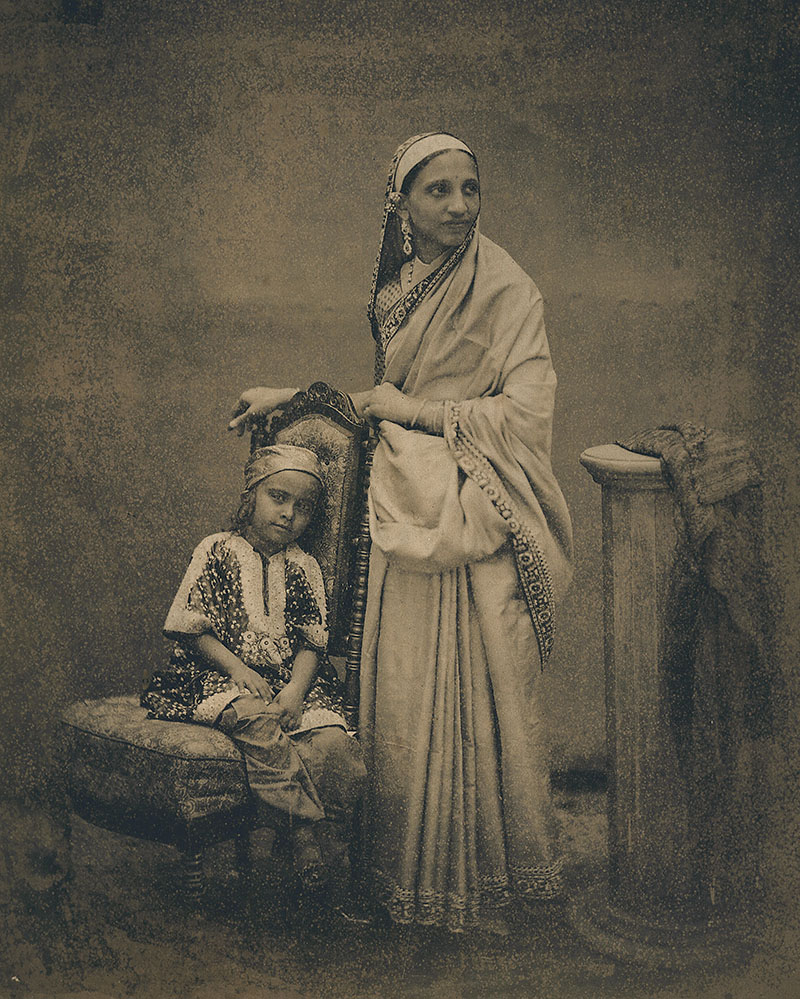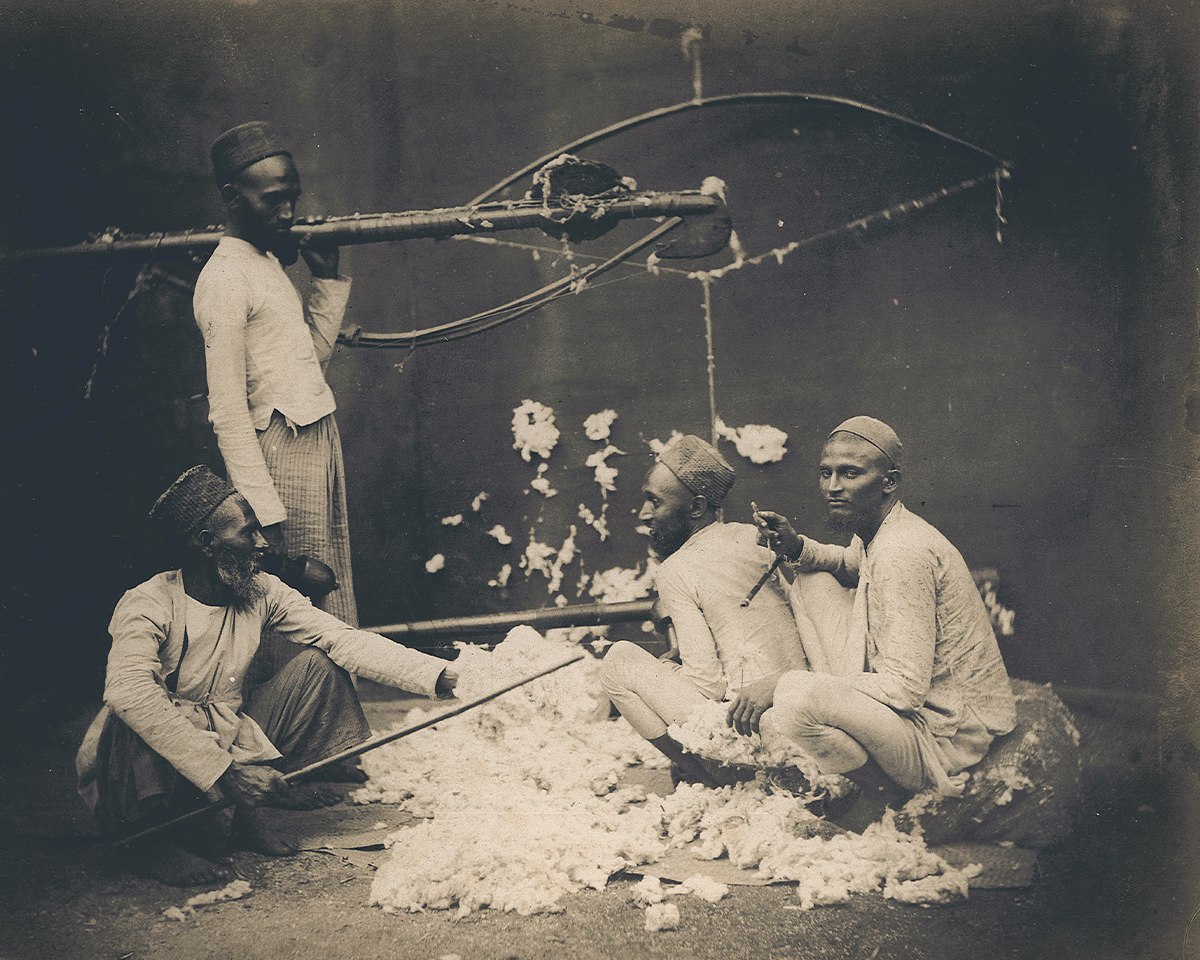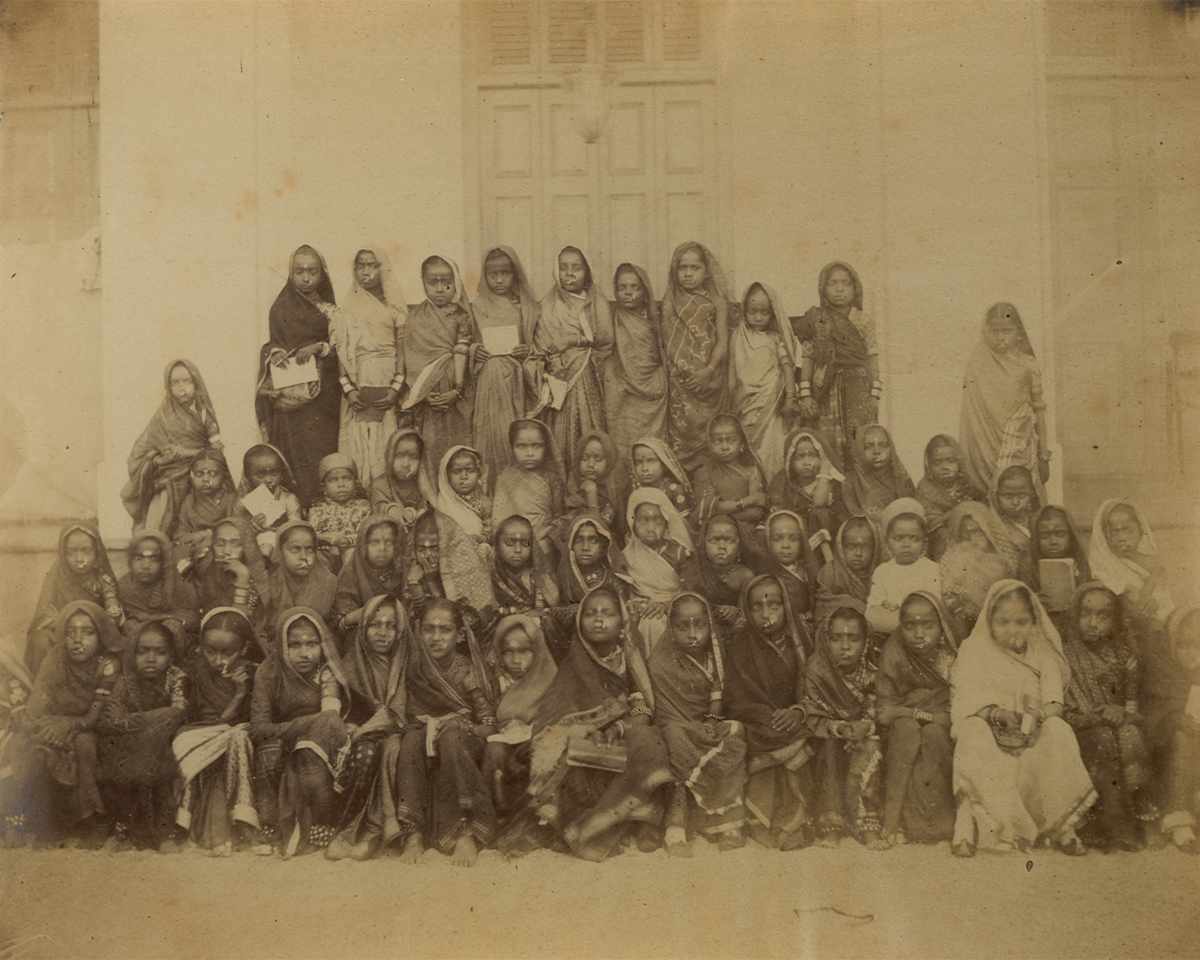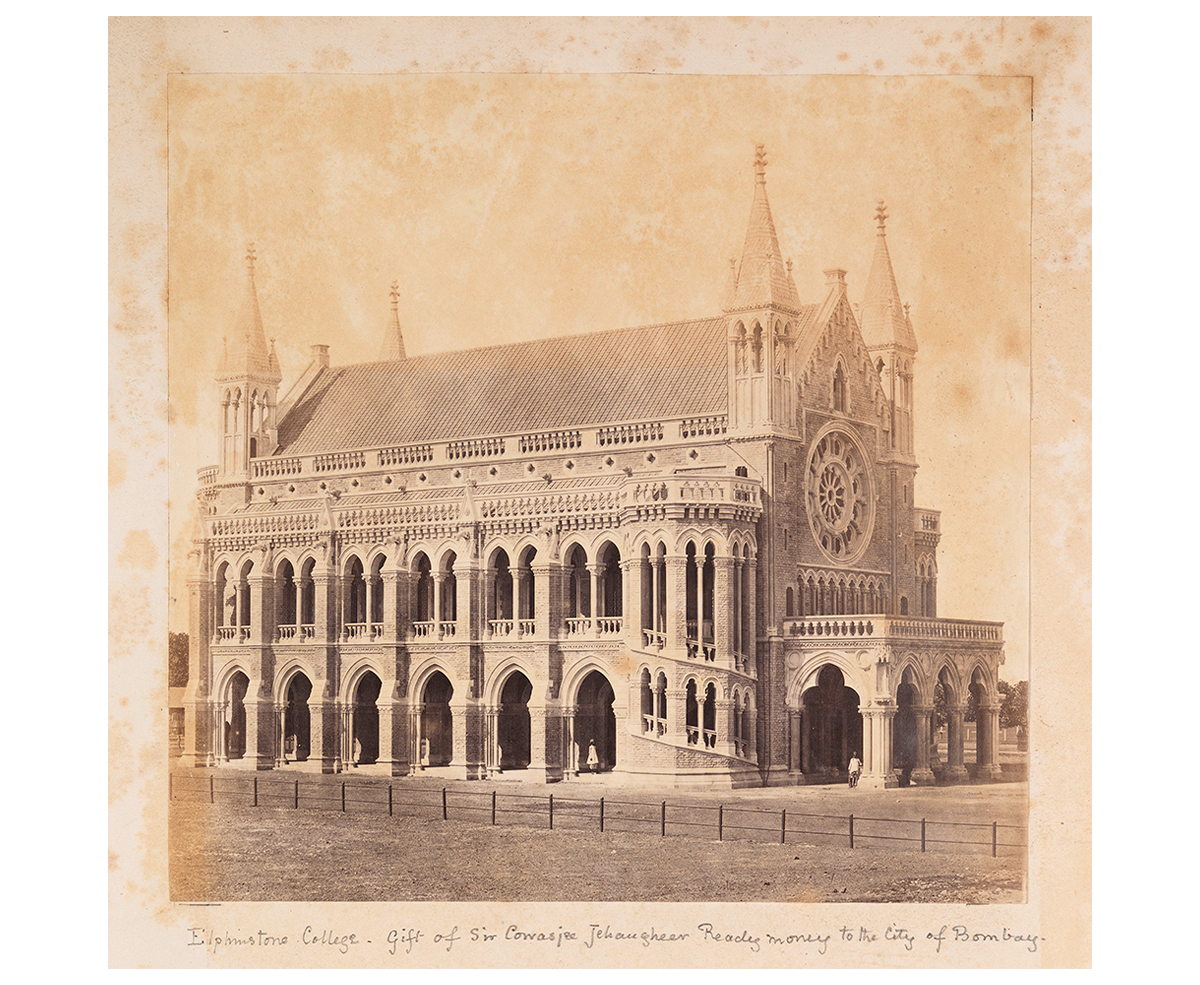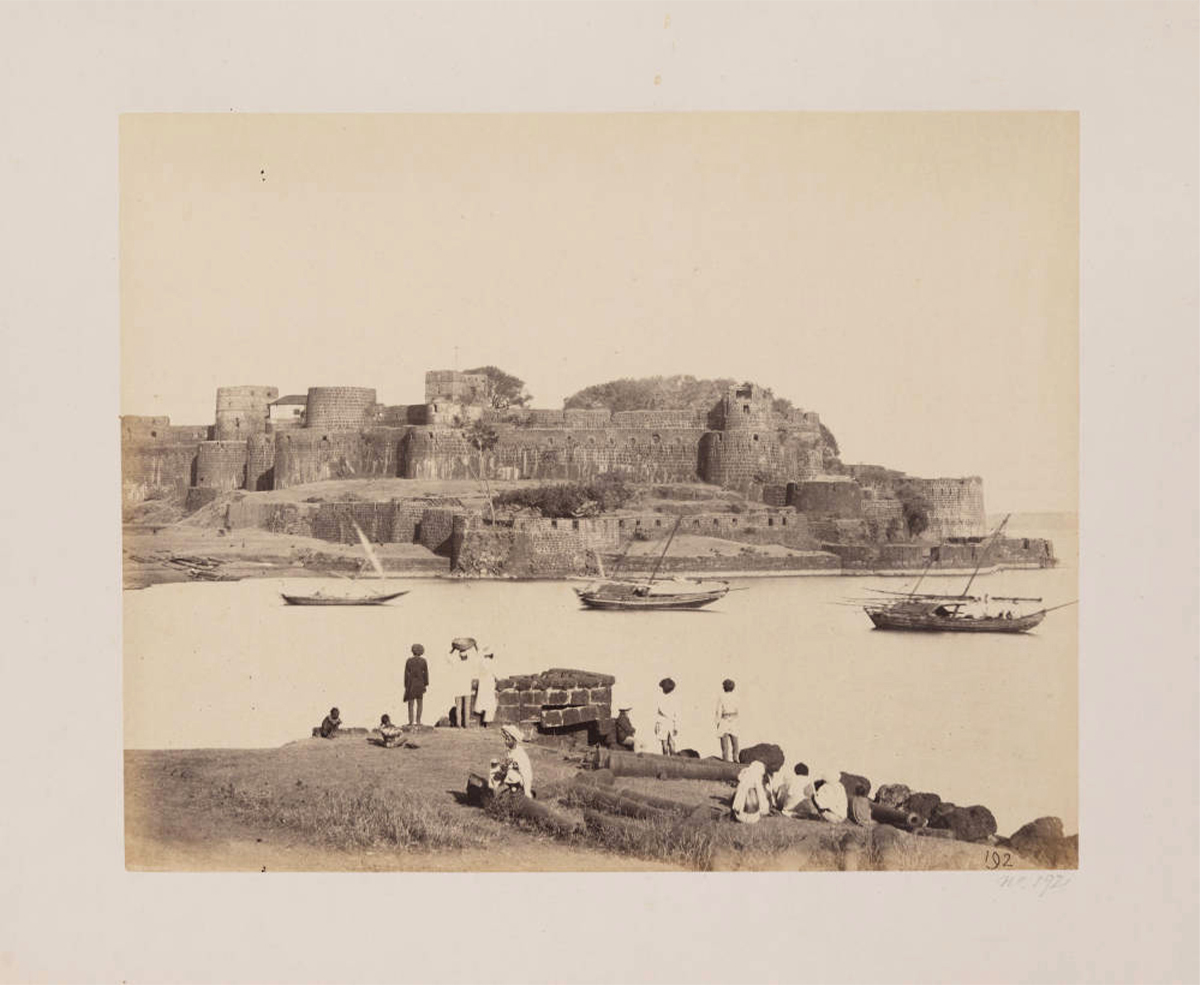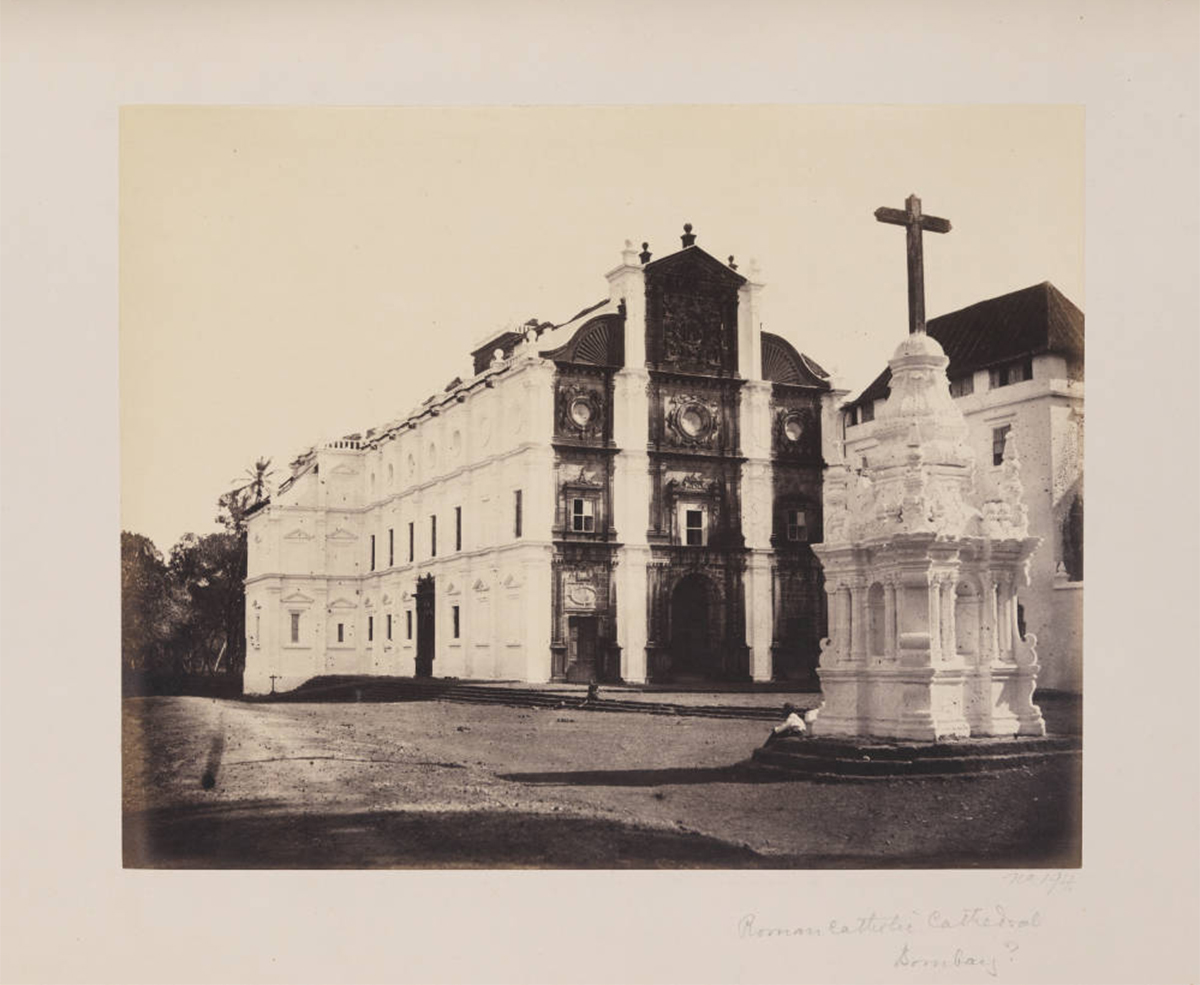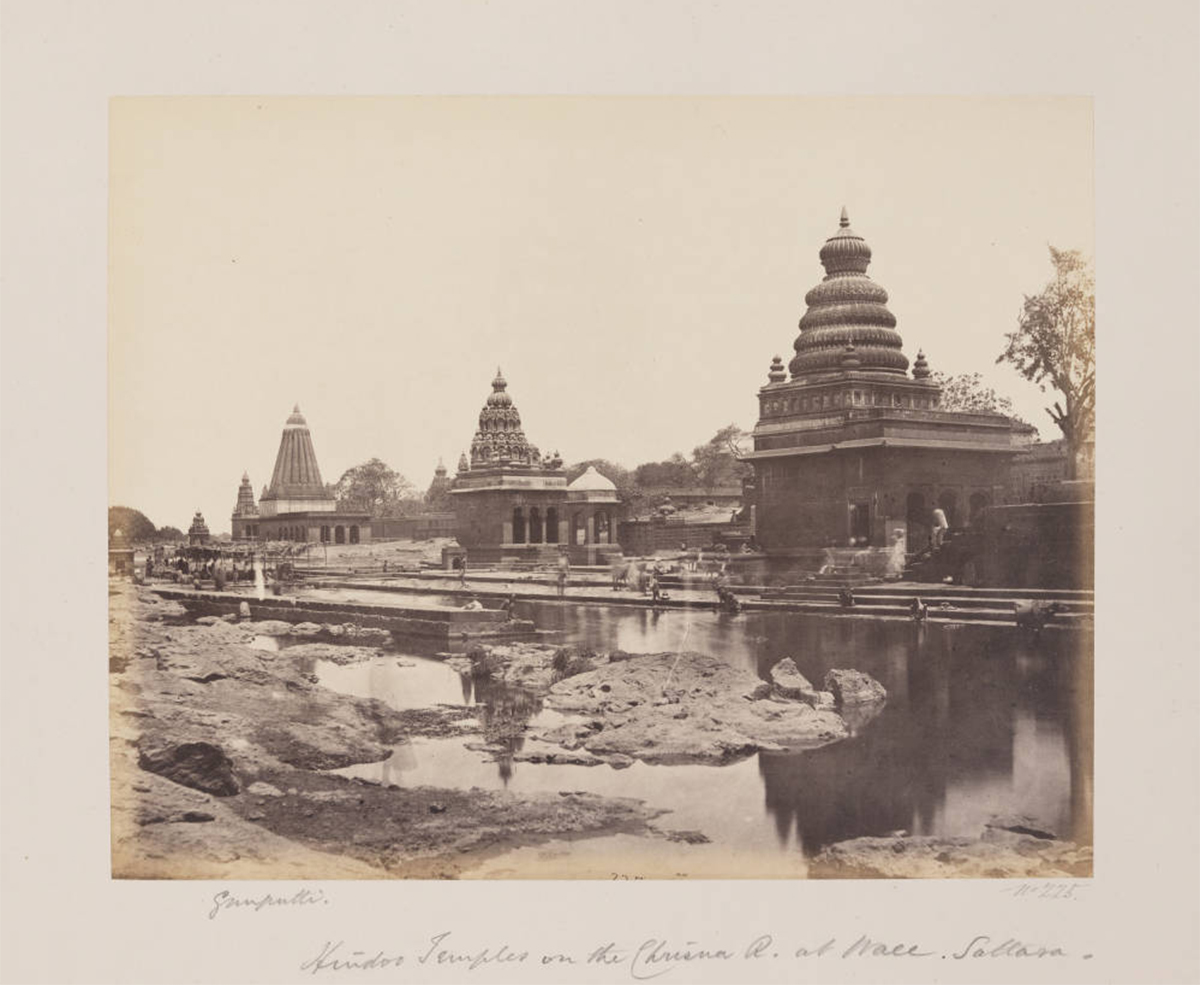ARTICLE
William Johnson
While Johnson used the daguerreotype process in his early photographs, from 1855 onwards, he began adopting the wet-collodion method. In his photographs, he employed techniques that echoed Victorian portraiture, developing carefully crafted photographs of groups of Jews, Banias and Parsis in Bombay posing against elaborate backgrounds consisting of velvet curtains and Roman pillars. The even lighting and centred composition of Johnson’s subjects indicate that these sessions were studio visits.
Photographs of Indians – often disseminated as souvenirs and postcards – were part of the British administration’s larger ethnographic project, and the modes and conventions of representation it encouraged played a significant role in how the subcontinent was understood and governed. Johnson’s subjects remained unnamed and were presented as typical representatives of their group, suggesting a certain foreignness, exoticism and a foray into ethnographic examination, therefore setting a visual precedent for subsequent ethnographic studies.
The photographs of caste groups taken individually by Johnson for the Indian Amateur’s Photographic Album are transformed in subsequent iterations found in The Oriental Races and Tribes, Residents and Visitors of Bombay (1863, 1866). His photographs were also used in the Frith Series India Vol. I, published by Francis Frith & Co. Since they were sold as souvenirs rather than full sets, it is difficult to find complete sets of Jonson’s photographs. The National Gallery of Australia houses the first volume of The Oriental Races and Tribes, Residents and Visitors of Bombay, whereas the DeGolyer Library of the South Methodist University in Dallas, USA, holds all three volumes of Photographs of Western India.
Bibliography
Our website is currently undergoing maintenance and re-design, due to which we have had to take down some of our bibliographies. While these will be re-published shortly, you can request references for specific articles by writing to hellomapacademy@map-india.org.




